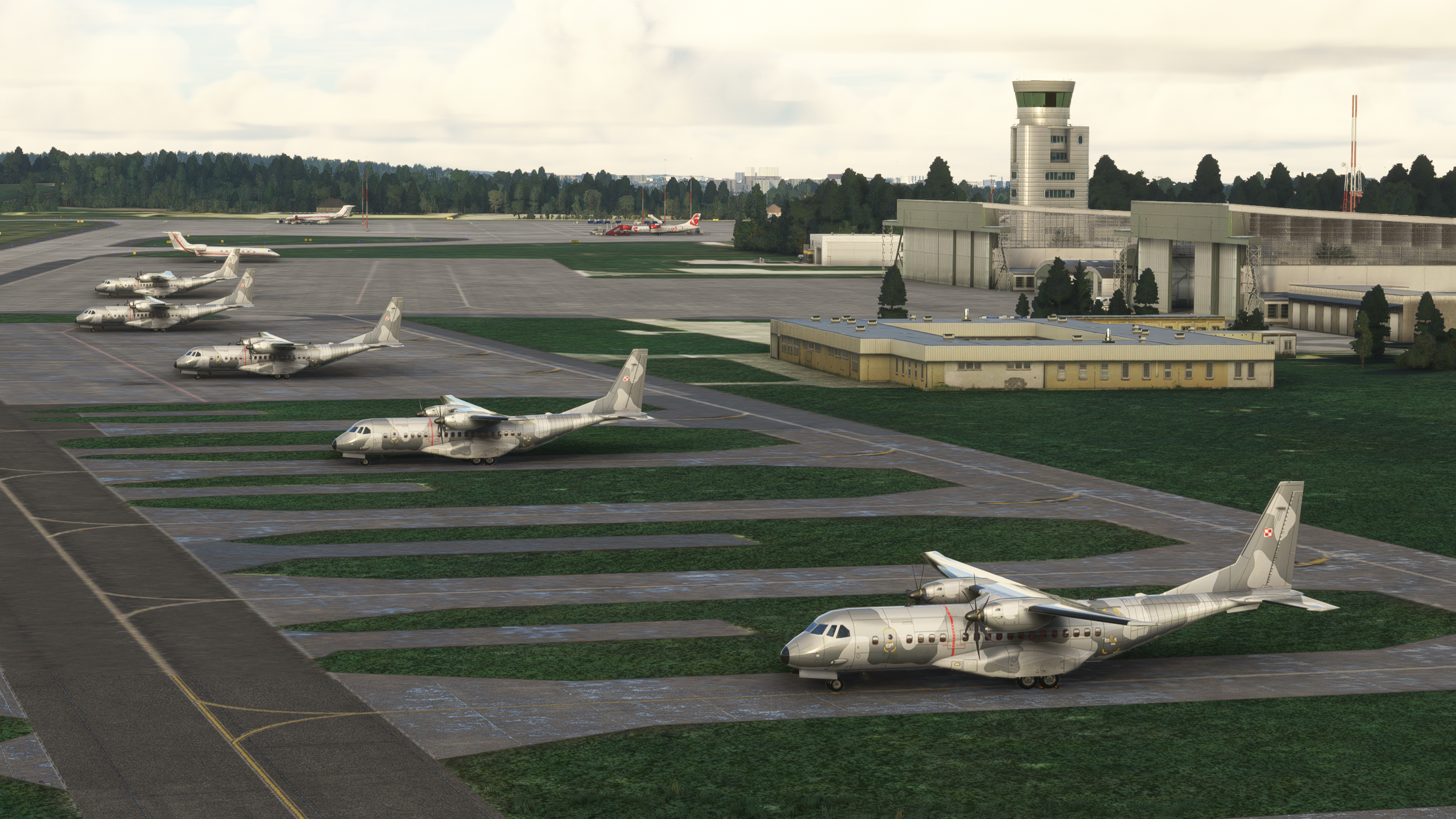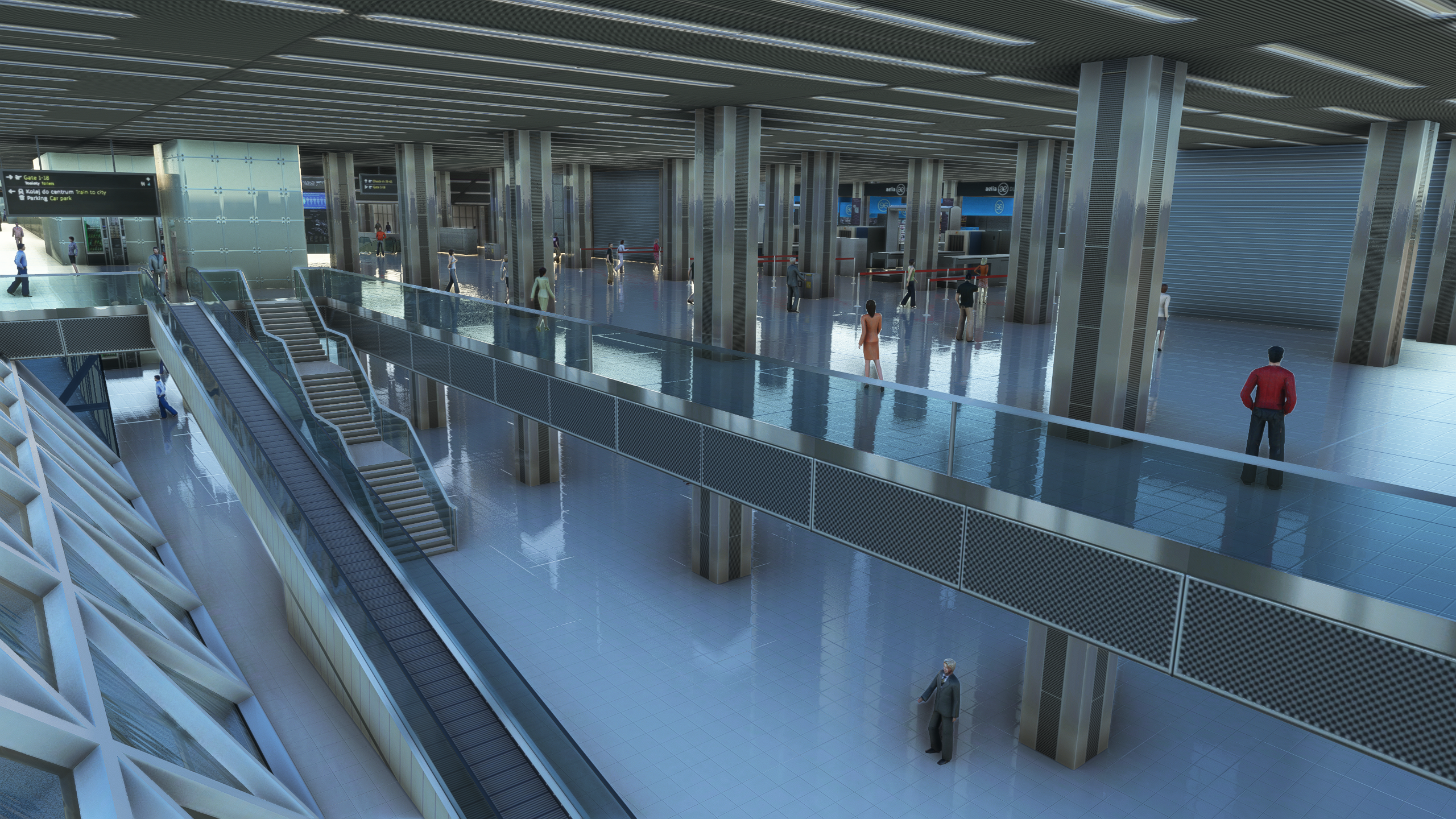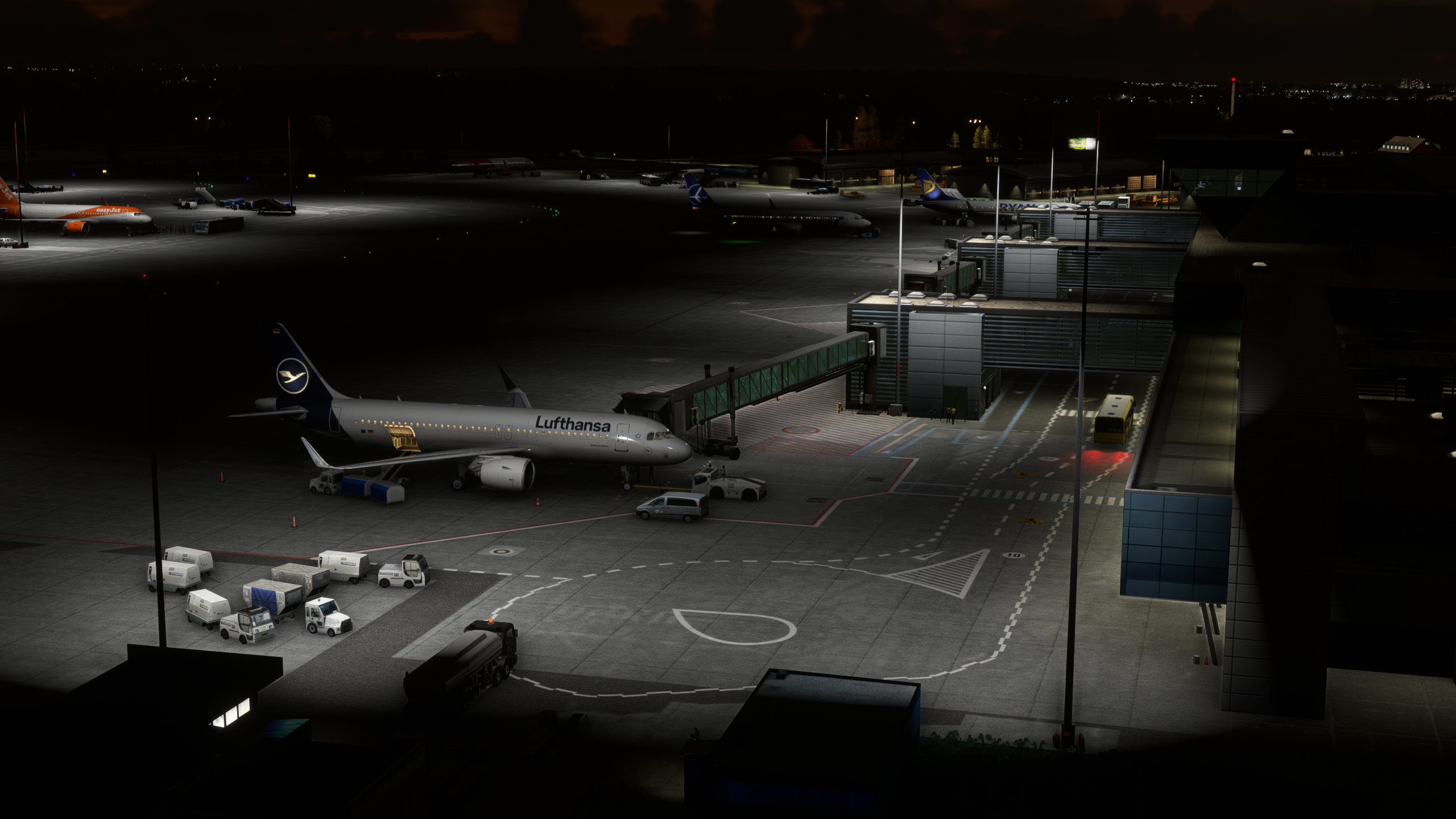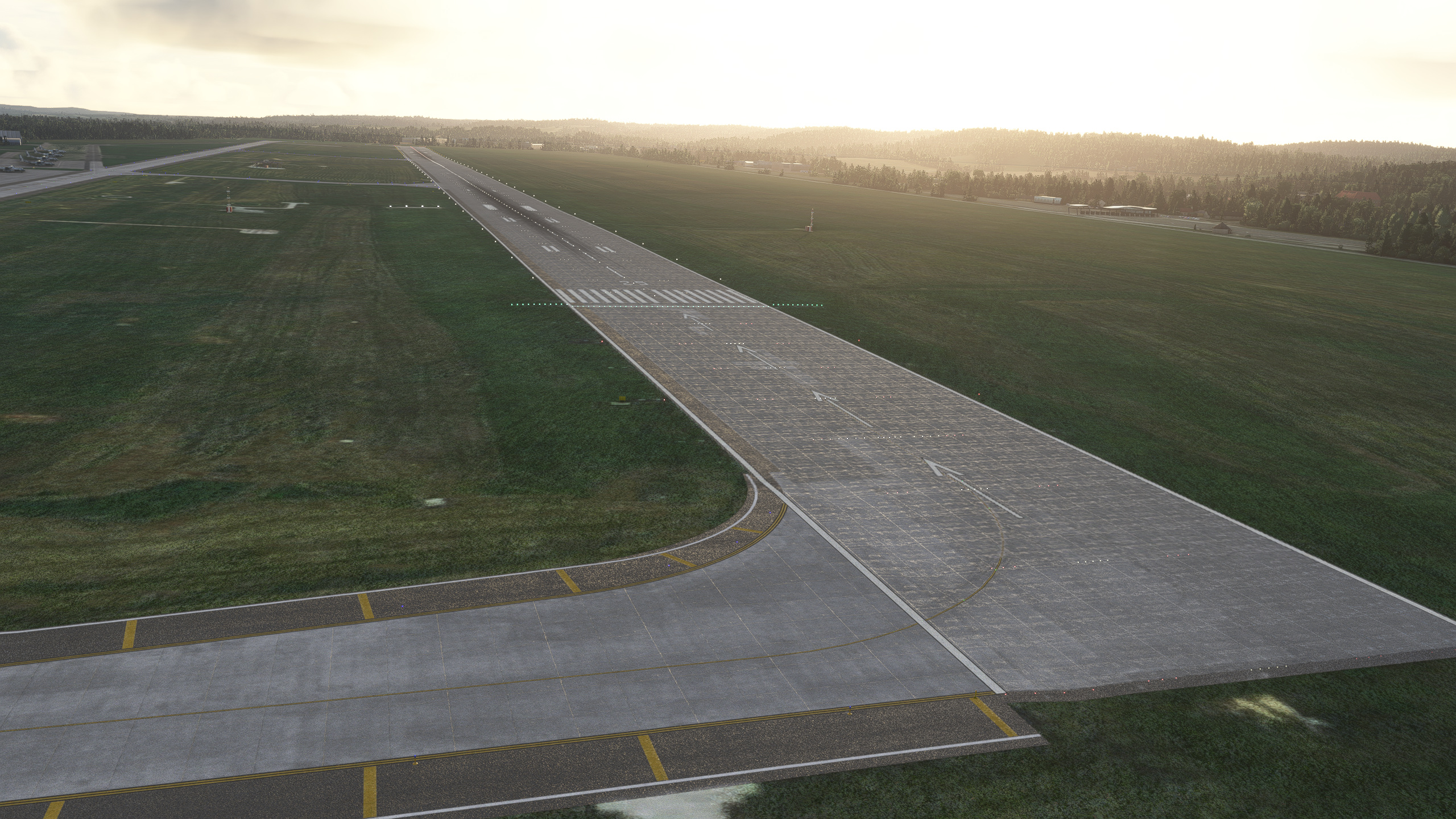Couldn't load pickup availability
* = £3.80 VAT | ¹ = Estimated currency conversion, you will be charged in GBP
Regular price
£18.99 GBP
£22.79 GBP
Regular price
£18.99 GBP
£22.79 GBP
Sale price
£18.99 GBP
£22.79 GBP
Unit price
per
€21.91 EUR¹
$25.64 USD¹
€26.29 EUR
$30.77USD
View full details
EPKK Kraków MSFS is a highly detailed scenery of EPKK John Paul II International Airport in Kraków (Cracow), Poland. This product is compatible with Microsoft Flight Simulator.
Kraków also spelled Cracow, is the second-largest and one of the oldest cities in Poland. Situated on the Wisla (Vistula) River in the Lesser Poland region, the city dates back to the 7th century. Kraków was the official capital of Poland until 1596 and has traditionally been one of the leading centers of Polish academic, economic, cultural, and artistic life. Cited as one of Europe's most beautiful cities, its Old Town has declared a UNESCO World Heritage Site. It began as a hamlet on Wawel Hill and was already being reported as a busy trading center of Slavonic Europe in 965. With the establishment of new universities and cultural venues at the emergence of the Second Polish Republic in 1918 and throughout the 20th century, Kraków reaffirmed its role as a major national academic and artistic center. The city has a population of approximately 760,000, with approximately 8 million additional people living within a 100 km (62 mi) radius of its main square.
Kraków John Paul II International Airport (IATA: KRK, ICAO: EPKK) is an international airport located near Kraków, in the village of Balice, 11 km (6.8 mi) west of the city center, in southern Poland. It is the second busiest airport in the country in terms of the volume of passengers served annually.
Kraków Airport is the second busiest airport in the country after Warsaw Chopin Airport. The airport has good growth prospects, as almost 8 million people live within 100 km (62 mi) of it. The airport also has a favorable location on the network of existing and planned motorways in this region of Poland, but it faces stiff competition from the nearby Katowice International Airport in Pyrzowice, as well as other Polish airports.
Krakow Airport is equipped with the ILS, NDB, and DVOR navigation systems. In direction 25, an ALPA-ATA cat. II approach lighting system with flashing lights installed. In direction 07, there is a simplified IDMAN approach lighting system. The airport apron equals 90,000 m2 and currently provides space for 19 C-code aircraft. In accordance with the ICAO standards, the Aircraft Rescue and Fire Fighting services provide Category Eight in terms of airport rescue and firefighting protection.
Kraków Airport as a facility is used by both military and civil aviation. The 8th Aviation Transport Base in Kraków-Balice is intended for securing and carrying out air transport tasks in favor of military units of the Polish Armed Forces and for the Polish Military Contingents. The Base uses two types of airplanes: CASA C-295M developed in Spain and Polish-built M28B/PT/GC, a derivative of Antonov 28.
Kraków-Rakowice-Czyżyny Airport (ICAO: EPKC) is one of the oldest permanent airfields in Europe, open for occasional traffic by certain types of aircraft. A portion of it is now the site of the Polish Aviation Museum with a 720-meter long and 60-meter wide segment of the original concrete runway restored for use by the museum for light planes (to 7,500 kg) and helicopters.
Kraków also spelled Cracow, is the second-largest and one of the oldest cities in Poland. Situated on the Wisla (Vistula) River in the Lesser Poland region, the city dates back to the 7th century. Kraków was the official capital of Poland until 1596 and has traditionally been one of the leading centers of Polish academic, economic, cultural, and artistic life. Cited as one of Europe's most beautiful cities, its Old Town has declared a UNESCO World Heritage Site. It began as a hamlet on Wawel Hill and was already being reported as a busy trading center of Slavonic Europe in 965. With the establishment of new universities and cultural venues at the emergence of the Second Polish Republic in 1918 and throughout the 20th century, Kraków reaffirmed its role as a major national academic and artistic center. The city has a population of approximately 760,000, with approximately 8 million additional people living within a 100 km (62 mi) radius of its main square.
Kraków John Paul II International Airport (IATA: KRK, ICAO: EPKK) is an international airport located near Kraków, in the village of Balice, 11 km (6.8 mi) west of the city center, in southern Poland. It is the second busiest airport in the country in terms of the volume of passengers served annually.
Kraków Airport is the second busiest airport in the country after Warsaw Chopin Airport. The airport has good growth prospects, as almost 8 million people live within 100 km (62 mi) of it. The airport also has a favorable location on the network of existing and planned motorways in this region of Poland, but it faces stiff competition from the nearby Katowice International Airport in Pyrzowice, as well as other Polish airports.
Krakow Airport is equipped with the ILS, NDB, and DVOR navigation systems. In direction 25, an ALPA-ATA cat. II approach lighting system with flashing lights installed. In direction 07, there is a simplified IDMAN approach lighting system. The airport apron equals 90,000 m2 and currently provides space for 19 C-code aircraft. In accordance with the ICAO standards, the Aircraft Rescue and Fire Fighting services provide Category Eight in terms of airport rescue and firefighting protection.
Kraków Airport as a facility is used by both military and civil aviation. The 8th Aviation Transport Base in Kraków-Balice is intended for securing and carrying out air transport tasks in favor of military units of the Polish Armed Forces and for the Polish Military Contingents. The Base uses two types of airplanes: CASA C-295M developed in Spain and Polish-built M28B/PT/GC, a derivative of Antonov 28.
Kraków-Rakowice-Czyżyny Airport (ICAO: EPKC) is one of the oldest permanent airfields in Europe, open for occasional traffic by certain types of aircraft. A portion of it is now the site of the Polish Aviation Museum with a 720-meter long and 60-meter wide segment of the original concrete runway restored for use by the museum for light planes (to 7,500 kg) and helicopters.
KEY FEATURES
































